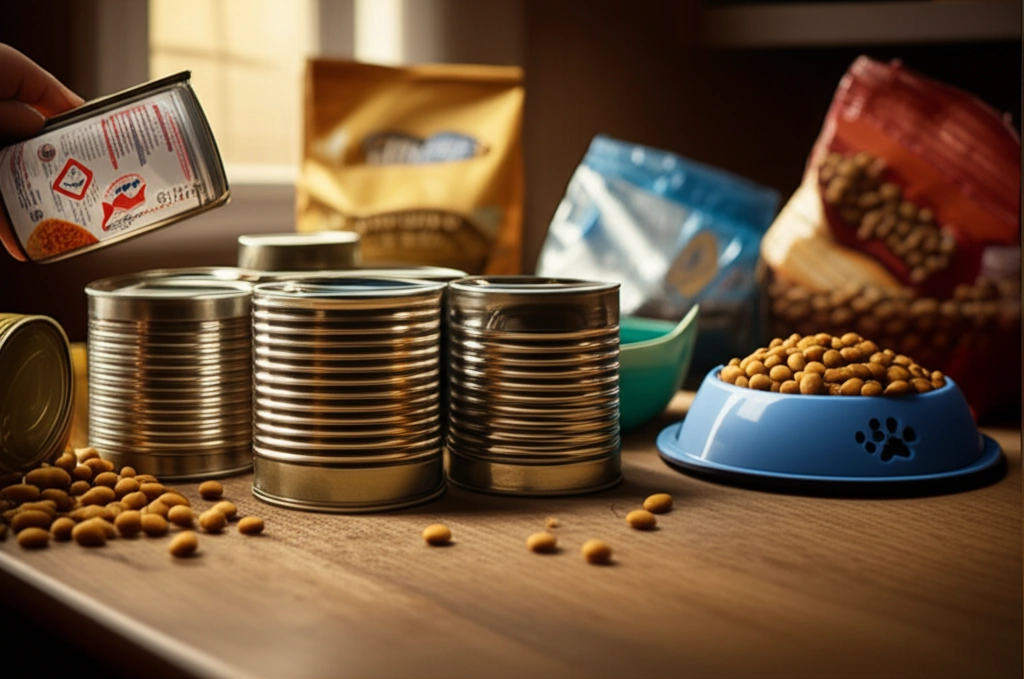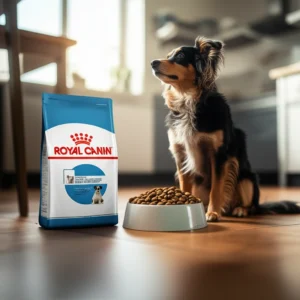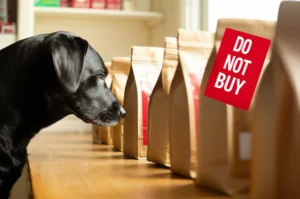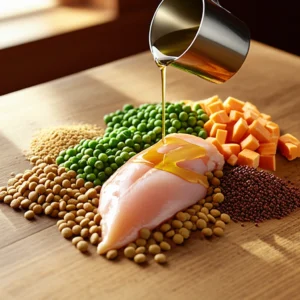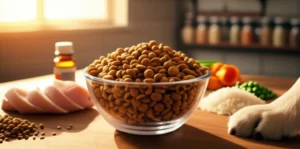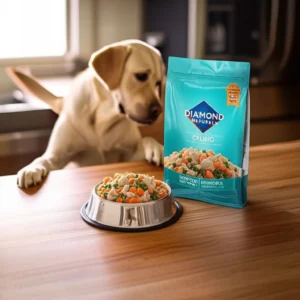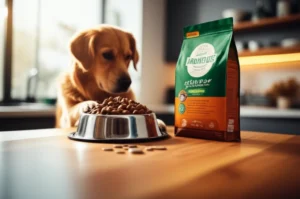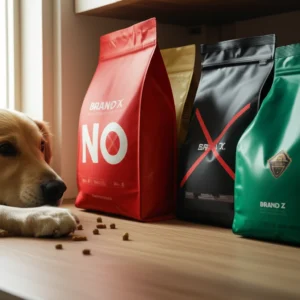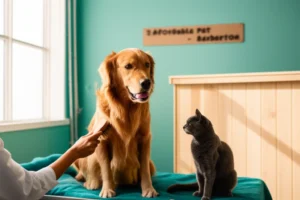Hey there, fellow dog lover! If you’re anything like me, the health and happiness of your furry pal is top priority. But have you ever stopped to wonder if that bag of kibble you’re feeding your dog is actually doing more harm than good? It’s tricky, right? With so many brands and glowing ads out there, it’s easy to get overwhelmed and confused. That’s why I put together this guide on the top 20 worst dog foods list—so you can dodge the bad stuff and know exactly what to look out for.
We’ll go through the worst offenders, what makes a dog food bad, and, most importantly, how you can make safer choices. No boring lecture here—just a friendly, straightforward chat packed with real info you can trust. Ready? Let’s dive in!
Why It Matters
Here’s the deal: not all dog foods are created equal. Some brands sneak in cheap fillers, artificial junk, or questionable ingredients that can cause allergies, digestive troubles, or long-term health issues. While your dog might gobble it up happily, their body could be silently struggling. Your pup’s health depends on balanced, quality nutrition—not just what’s affordable or available at the grocery store.
Before you panic, though, remember this isn’t about scaring you—it’s about being informed. Even big brands can have problematic formulas, and sometimes a single ingredient can make the difference between nutritious and harmful. We’re aiming for balance here: knowing the risks helps you protect your buddy without losing your cool.
How We Picked These Worst Dog Foods
Good question! Not all “worst” lists are fair or useful. For this guide, the picks are based on real criteria:
- Ingredients quality: Watch out for vague terms like “meat by-products” or “animal digest” instead of clearly named meats.
- Fillers and allergens: Corn, wheat middlings, corn gluten meal, and other cheap carbohydrates can trigger allergies and offer little nutrition.
- Harmful additives: Artificial preservatives like BHA, BHT, propylene glycol, and artificial colors.
- Recall history: Brands with frequent food recalls or reported pet illnesses.
- Nutritional completeness: Whether the food meets AAFCO standards and has transparent feeding guidelines.
We also leaned heavily on expert veterinary nutrition insights and recent pet food safety data. This ensures the list isn’t just opinion—it’s a practical, trustworthy guide you can depend on.
Top 20 Worst Dog Foods List Overview
| Rank | Brand & Formula | Main Problematic Ingredients | Primary Concern | Recall History |
|---|---|---|---|---|
| 1 | Alpo by Purina | Corn, soy, artificial colors, unidentified bone meal | Low-quality fillers, artificial additives | Several recalls reported |
| 2 | Beneful by Purina | Artificial preservatives, propylene glycol, sugars | Potential toxicity, nutrient imbalance | History of complaints |
| 3 | Kibbles N Bits | Corn syrup, BHA, caramel coloring | Artificial preservatives, poor nutrient content | Several warnings |
| 4 | Ol’ Roy (Walmart) | Ground yellow corn, meat & bone meal, BHA preservative | Low-quality protein | Recalled multiple times |
| 5 | Purina One Smart Blend | Cheap fillers, animal digest, salt overload | Imbalanced nutrition | Consumer complaints |
| 6-20 | Other brands like Cesar, SPORTMiX Wholesomes, Hill’s Science Diet | Chicken by-products, meat meals, preservatives | Fillers and artificial additives | Varied recall history |
This table gives you a quick snapshot of troublemakers. The full breakdown below dives into each one’s story and risks.
The Nitty-Gritty: What Makes These Dog Foods The Worst?
Let’s break down some of the prime culprits that haunt shopping aisles:
Ingredients That Should Raise Red Flags
Terms like “meat by-products” or “animal digest” might sound professional, but they often mean mystery meat parts — some of which aren’t exactly appetizing or healthy. Ideally, your dog’s food should list real, named meats like “chicken” or “beef” right at the top. Also, avoid fillers like corn gluten meal and wheat middlings, which are mostly empty carbs making your dog’s diet less nutrient-rich.
Those sneaky preservatives—BHA, BHT, propylene glycol—are another story. These chemicals help keep kibble fresh longer, but they can be harmful. Studies have raised concerns about BHA/ BHT being carcinogenic, and propylene glycol has been linked to kidney damage in dogs. Plus, artificial colors like Red 40 or Yellow 5 offer zero nutritional benefits and some pets react poorly, even if you don’t see it right away.
Watch Out For Misleading Marketing
It’s tempting to trust labels claiming “all natural,” “real meat,” or “holistic.” But unfortunately, those words don’t have strict legal definitions in pet food labeling and can be used loosely. The magic is in the details: check for an AAFCO (Association of American Feed Control Officials) statement, look for clear ingredient lists, and research the company’s reputation for transparency and recalls.
Grain-Free Dog Food Brands To Avoid
You’ve probably heard a lot about grain-free diets lately. For some dogs, grain-free is essential due to allergies or sensitivities. But here’s the kicker: some grain-free brands have been linked to heart disease (DCM) concerns, which makes it crucial to choose very carefully. Not all grain-free dog foods are bad, but some brands to avoid have flashy marketing without solid nutrition.
If you want to dig deeper, there’s a helpful guide outlining grain-free dog food brands to avoid that’s worth checking out.
Dry vs. Wet: Is Dry Dog Food Riskier?
Dry kibble tends to be the most common, but it’s not without problems. Many of the worst dog foods are dry because they often rely on artificial preservatives and fillers to maintain shelf life. The manufacturing process includes cooking the ingredients multiple times, which can degrade nutrients.
That said, if your dog prefers dry food (and many do), you can still find best dry dog food brands that focus on quality ingredients and good nutritional balance.
Switching Your Dog’s Food Without Drama
Changing your dog’s diet shouldn’t feel like a leap of faith. The golden rule? Take it slow. Mix the new food with the old, gradually increasing the new over 7-10 days. This helps avoid tummy upset and lets you spot any allergies early.
Look out for loose stools, itching, or loss of appetite — your dog’s way of saying the new food might not agree with them. And if any worrying symptoms pop up, it’s always a great idea to chat with your vet.
Better Choices: Safer Dog Food Alternatives
Alright, enough about the bad stuff—what about the good? When shopping, look for:
- Named animal proteins listed first (like “chicken” or “lamb”)
- Limited, recognizable ingredients
- Clear nutrition labels and feeding guidelines based on AAFCO standards
- Brands known for transparency and positive reputations
If you want a starter list of best dog food brands, there are plenty that meet these criteria. Remember, premium dog food doesn’t have to break the bank, and your dog will thank you with better energy, shinier coat, and fewer vet visits.
About Royal Canin and Big Brands
Now, Royal Canin often pops up in discussions on dog food. It’s a bit of a mixed bag. On one hand, Royal Canin formulas are breed-specific or disease-specific, offering tailored nutrition. On the other, some of their products include ingredients and preservatives that raise eyebrows among pet nutrition experts.
The key is to evaluate brands like Royal Canin on a formula-by-formula basis rather than lumping them all together. You’ll find that many “big” brands have hits and misses. That’s why it’s vital to read labels, see if the formula fits your dog’s needs, and check for recalls or complaints.
True Stories & Shared Experiences
Let me share a quick story from a vet clinic client who switched away from a popular budget dog food after their golden retriever developed scratching and digestive upset. Within weeks of changing to a more transparent, higher-quality brand, the dog’s itching stopped, and energy bounced back. Just goes to show how a food change, based on solid info, can make a real difference.
Have you noticed changes when switching your dog’s food? Or had an unexpected reaction? I’d love to hear your thoughts or questions anytime.
Wrapping It Up
Choosing the right dog food isn’t always straightforward, but understanding the top 20 worst dog foods list and what makes a brand questionable can protect your pup from health risks. Keep an eye on ingredients, avoid fillers and harmful additives, and don’t be swayed just by fancy packaging or marketing buzz. If you’re looking for quality choices, consider researching the best dog food brands and learn more about grain-free dog food brands to avoid too.
Remember, your pup depends on you to make the best calls. A little care now means years of tail wags, wet nose kisses, and joyful walks ahead. So, what’s your dog eating today? Is it time for a change?

